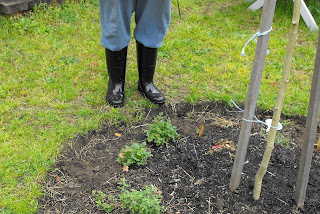We have a grant to do some "Placemaking" - but what is this concept and how do we go about achieving it?
Think of a physical place you like to be and think of social situations which warm you and make you feel good, combine the two and you have placemaking in action. That's an abbreviated and very simplistic definition. Here are some quotes to expand the idea
"Placemaking , the creation of liveable, people friendly, walkable, resilient and beautiful places, revitalises and renews existing communities, creates social sustainability."
“Placemaking is the process of creating spaces that are vibrant and pleasurable by engaging the senses, the intellect and memory.”
P”"Place making is not about making ‘great places’ – it is about making great places – for people. “
“Place making is the process of creating ‘places’ that provide economic, intellectual, cultural, emotional and sensory nourishment for the people who will use them - builds relationships between people, and between people and their places.”
"A place is attractive to people because it has a unique identity that is authentic to the location – “spirit of place”, “soliphilia”. This makes the place meaningful to people because they can connect to it in a personal and often emotional way. When the identity of a place changes, e.g. a main street deteriorates, people’s perception of that place will change too. (Solistalgia)
Perception of the character of a place is key to their participation in the life of that place i.e. if it feels dangerous they won’t come or if it is dominated by one group it may appear that others are not welcome. For these reasons an essential aspect of any place making process is the involvement with the community who uses or wants to use a place. It is their knowledge and aspirations that should guide the creation of place – after all they are the people who are going to use them. "
Perception of the character of a place is key to their participation in the life of that place i.e. if it feels dangerous they won’t come or if it is dominated by one group it may appear that others are not welcome. For these reasons an essential aspect of any place making process is the involvement with the community who uses or wants to use a place. It is their knowledge and aspirations that should guide the creation of place – after all they are the people who are going to use them. "
"1. reveal and respond to the character of the place
2. involve people in the planning and activation of the place
3. respond to people’s emotional needs and aspirations
4. create ‘attractive’ places for people by providing them with multiple experiences
5. create pleasurable experiences that evoke sensory and emotional delight."
Our Place at 31A Church Street is a public place on privately owned land. It already has many of the characteristics - it involves people socially and emotionally, is attractive, provides multiple experiences, it has a history, invokes memory and engages intellect. Our task is to show more people in the local community how this is open to them too.
This piece of land was once part of the lush and dense woodland and rainforest which grew before European settlement. It would have been traversed by many Awabakal feet over many thousands of years. A short walk to the top of the hill to what is now Crebert Street and they would have seen the river and it's channels where Industrial Highway now runs. The rock you see next to roads and exposed along the Highway contains Chert, a very hard rock which makes durable and sharp stone tools of all sizes. These were highly prized and traded far inland along trade routes - this area was an industrial site long before 1801.
 | ||||
| From Newcastle Regional gallery collection, painted by convict/colonial artist, Joseph Lycett, a hint of the scene you might have seen from what was Platt's Channel and is now Steel City, looking towards Keepa Keepa (Mt Sugarloaf) |




















































